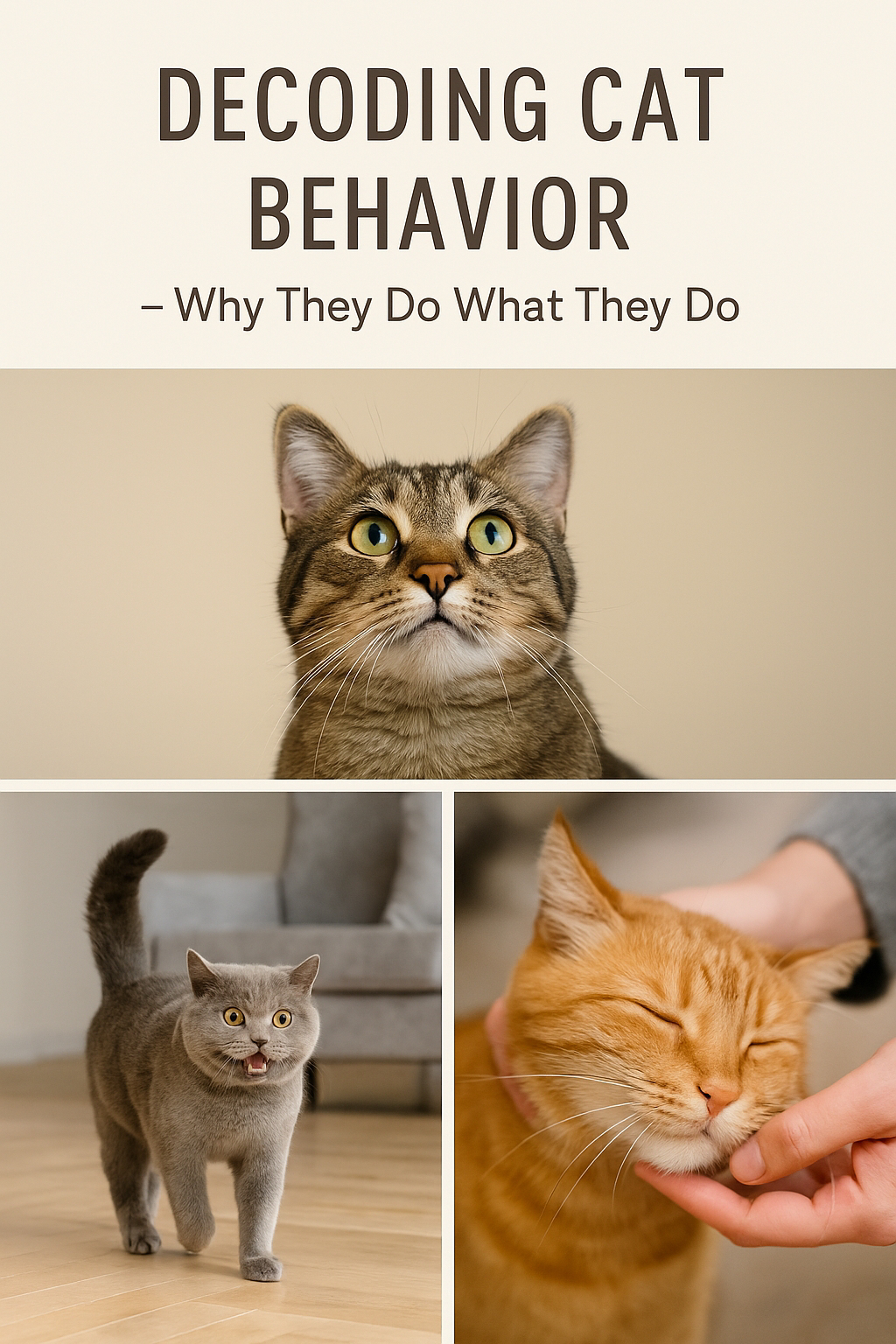Cats have a reputation for being low-maintenance, independent, and perfectly content to nap the day away. But here's a question every cat owner should ask:
Do cats get bored?
The answer is a resounding yes—especially indoor cats. While they might not need a walk like a dog or demand constant attention like a toddler, cats absolutely need mental and physical stimulation to stay healthy and happy. Without it, they can develop behavioral problems, gain weight, or even become depressed.
So let’s talk about why cats get bored, how to spot the signs, and—most importantly—how to keep your indoor feline friend entertained, enriched, and thriving.
🧠 Yes, Cats Can Get Bored (And It’s More Common Than You Think)
In the wild, cats spend a huge portion of their day hunting, stalking, climbing, and defending territory. They’re natural problem-solvers and athletes—even the laziest-looking house cat has ancient instincts just below the surface.
But indoor cats don’t have to work for their food. Their territory rarely changes. They don’t hunt or chase or solve puzzles unless we give them those opportunities. And when those natural needs aren’t met? Boredom sets in.
🚩 Signs Your Cat Might Be Bored
Not sure if your cat is bored or just mellow? Watch for these common signs of feline boredom:
- Destructive behavior (scratching furniture, knocking items off shelves)
- Overeating or begging for food constantly
- Sleeping excessively (more than their usual 16–20 hours)
- Meowing excessively or acting out to get your attention
- Aggression toward other pets or people
- Obsessive grooming or overgrooming
- Pouncing or attacking you during play-starved moments
Some of these signs can also indicate health issues, so if you're unsure, always check with your vet. But in many cases, it’s just a bored kitty who needs more stimulation.
🧩 Enrichment Ideas – How to Stimulate Your Indoor Cat
Here’s the good news: keeping your cat entertained doesn’t have to be complicated or expensive. In fact, some of the best enrichment options are simple and DIY-friendly.
🐭 1. Rotate Toys Regularly
Cats get bored with toys that never change. Keep a stash and rotate them weekly to keep things fresh. Add in a mix of:
- Wand toys
- Stuffed mice
- Crinkly balls
- Puzzle toys
- Feather teasers
🎮 2. Try Puzzle Feeders and Food Games
Give your cat’s brain a workout by making them “hunt” for their food. You can buy puzzle feeders or make your own by hiding kibble in toilet paper rolls or egg cartons.
Bonus: this also slows down fast eaters!
📺 3. Cat TV – Yes, It’s a Thing
YouTube is full of bird videos made just for cats. You can also set up a bird feeder outside a window to give your indoor cat a safe way to “hunt” with their eyes.
Window perches make it even better.
🏗️ 4. Climbing Structures and Vertical Space
Cats love to be up high. Provide cat trees, shelves, or tall furniture they can safely climb. It gives them a better vantage point and satisfies their instinct to patrol.
No need to break the bank—stacked bookshelves or DIY wall shelves work great.
🚪 5. Controlled Outdoor Time
If your cat is open to it, try harness training for short, supervised outdoor adventures. You can also set up a "catio" (cat patio) or window box for fresh air and safe exploration.
Even 10 minutes outside can make a big difference.
🧸 6. Interactive Play With You
You are your cat’s favorite toy. Schedule playtime with wand toys, laser pointers, or hide-and-seek games. Even 15 minutes a day can burn energy and strengthen your bond.
Remember: never let your cat catch the laser pointer—end the game with a real toy or treat to avoid frustration.
🌿 7. Sensory Enrichment
Try safe plants like cat grass or catnip. Some cats also love the scent of silvervine or valerian root. These options engage their senses and spice up the environment.
Don’t overdo it—use as a treat, not daily.
🧶 8. Cardboard Boxes, Tunnels, and Paper Bags
Sometimes, the best toy is a cardboard box. Add some paper, cut holes for peeking, or create a little cat fort. Bonus points if it turns into a full obstacle course.
Just remove any handles or strings that could be a hazard.
🧓 What About Senior Cats?
Older cats can get bored too, but they may not show it as energetically. Gentle play, easy-to-navigate cat furniture, and calming enrichment like scent-based toys can help. Don’t assume that because they’re napping a lot, they don’t want stimulation—it just might need to be lower-impact.
🧠 Mental Stimulation Is Just as Important as Physical
We often think about cats needing physical activity, but mental enrichment matters just as much. If your cat seems under-stimulated but isn’t playful, try:
- Teaching simple tricks (yes, it’s possible!)
- Naming toys and encouraging them to “find” specific ones
- Playing memory games with hidden treats
- Switching up routines with small surprises
A cat with a busy brain is a happy cat.
🐾 Final Thoughts – A Bored Cat Is a Misunderstood Cat
If your indoor cat seems a little “off” lately, boredom might be the culprit. The good news is that you don’t need fancy gear or endless free time to keep your kitty engaged. A little creativity, a few minutes of daily interaction, and rotating enrichment can go a long way.
Cats are clever, curious, and full of personality—and when we give them the stimulation they need, they reward us with calmer behavior, better health, and a stronger bond.
So go ahead: grab the feather wand, open the blinds, and let your cat be a cat.



